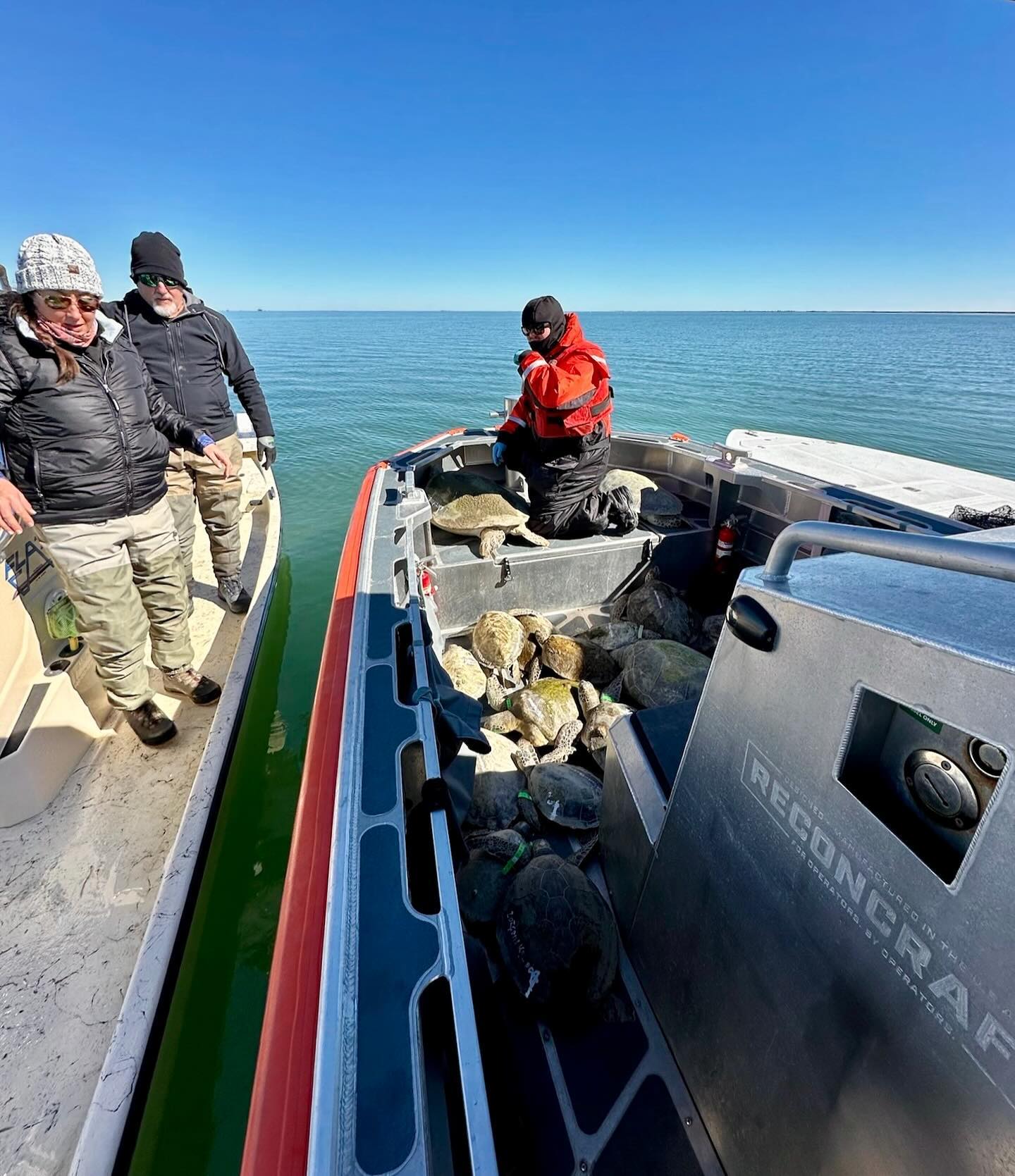- Coordination efforts among agencies for sea turtle conservation and wildlife recovery.
- Understanding cold-stunning in sea turtles and its ecological implications.
- The role of the Sea Turtle Stranding and Salvage Network (SSTN) in wildlife preservation.
- Significance of the Texas State Aquarium in rehabilitating recovered sea turtles.
- The importance of community and government support in wildlife rescue operations.
Across the weekend, Sector Corpus Christi demonstrated a coordinated effort with the Sea Turtle Stranding and Salvage Network (SSTN) to address a pressing ecological occurrence within the Intracoastal Waterway. These efforts were pivotal in managing cold-stunned sea turtles—a condition that severely affects these marine reptiles when exposed to sudden drops in temperature. With the assistance of South Padre Island, Port Aransas, and Port O’Connor, a total of 64 sea turtles were successfully rescued and brought to the Texas State Aquarium for rehabilitation.
The collaboration between different agencies exemplifies an exceptional conservation initiative aimed at preserving marine wildlife. This recovery operation underscores the necessity of coordinated actions in wildlife conservation, where multiple entities work towards a common goal. By pooling resources and expertise, stakeholders were able to respond effectively and efficiently to this environmental challenge. Such collaborations not only increase the success of wildlife rescue operations but also highlight the importance of maintaining a network of well-prepared organizations ready to act in times of ecological distress.
Cold-stunning occurs predominantly in sea turtles when they encounter water temperatures that fall below their tolerance threshold, typically around 50°F. This physiological state acts as a shock to the turtles, dramatically reducing their metabolic rate and often paralyzing them to the point of being unable to swim or even float. This incapacitation can lead to increased vulnerability to predators and environmental hazards, including boating traffic and stranding.
The onset of cold-stunning aligns with cold weather patterns, which disrupt the normal thermoregulatory behaviors of sea turtles. They typically migrate to warmer waters; however, sudden shifts in temperature can leave them stranded in colder regions. The condition signifies broader ecological concerns, as it can result from climate variations and human-induced environmental changes that alter the natural habitats and migratory routes of these ectothermic creatures. Understanding and intervening in cold-stunning events are essential for ensuring the continuity of sea turtle populations, which already face numerous threats globally.
The Sea Turtle Stranding and Salvage Network (SSTN) plays a pivotal role in the preservation and recovery of marine life affected by such conditions. Established as a collaborative effort involving volunteers, researchers, and governmental agencies, the SSTN is dedicated to the rescue, rehabilitation, and conservation of stranded sea turtles. The network collects data on stranded turtles, providing invaluable information that aids in understanding and mitigating the impacts of cold-stunning. This data also informs conservation strategies and helps identify hotspots that require increased monitoring and intervention.
The involvement of the Texas State Aquarium in this operation is significant, as it offers a dedicated space for the care and rehabilitation of the cold-stunned turtles. Equipped with the necessary resources and expertise, the aquarium provides essential medical treatment and care, helping the turtles recover to the point where they can be safely released back into their natural habitat. The collaborative effort between the SSTN, Texas State Aquarium, and local support teams underscores the critical role that facilities like aquariums play not only in wildlife preservation but also in fostering broader environmental education and stewardship within the community.
The successful recovery and rehabilitation of the cold-stunned sea turtles were made possible by the joint efforts of local communities and government agencies. The involvement of these entities is crucial, as it underscores the role of citizen engagement and community initiatives in supporting conservation goals. Local participation fosters a sense of responsibility and awareness about wildlife and environmental issues, creating a cooperative environment where agencies can operate more effectively. Furthermore, governmental support helps in mobilizing resources, enacting policies, and implementing changes aimed at reducing the risk of wildlife stranding events in the future.
In conclusion, the collaborative initiative led by Sector Corpus Christi and the SSTN highlights the importance of coordinated efforts in wildlife conservation. Through understanding and addressing the phenomenon of cold-stunning, initiatives like these contribute significantly to the protection and preservation of endangered sea turtle populations. As the threat of climate change continues to impact marine ecosystems, it becomes increasingly vital to support such conservation actions and enhance public understanding of ecological dynamics, paving the way for a more sustainable relationship between humans and the natural world.
*****
Source Description
Over the weekend Sector Corpus Christi coordinated with the Sea Turtle Stranding and Salvage Network (SSTN) to assist in the recovery of cold-stunned sea turtles in the Intracoastal Waterway. Thanks to the support of STA South Padre Island, Port Aransas, and Port O’Connor, 64 sea turtles have been safely recovered and transferred to the Texas State Aquarium for care.


